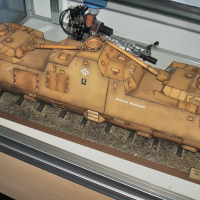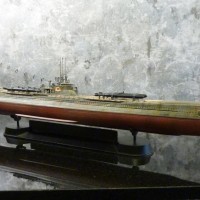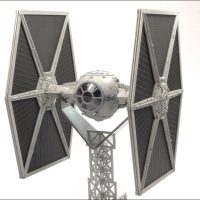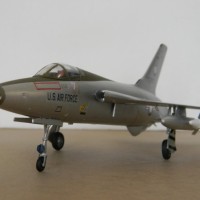Hugo's corrugated iron wonder: Junkers F.13 ‘Annelise’
Junkers machines with names such as ‘Herta' or ‘Annelise': as creative, imaginative and revolutionary as Hugo Junkers' work was, when it came to naming the first Junkers F.13 aeroplanes, he showed himself to be very much a family man. The first F.13 produced was named after his eldest daughter Herta, while the second aircraft shown here in the model was named after his daughter Annelise.
A new type of commercial aircraft: Junkers F.13
It is not only the family name that makes it clear that the project of a commercial aircraft based on the successful Junkers Wellblech fighter and attack aircraft, which was conceived in the last year of the war and realised as early as 1919, was a true project close to Hugo Junkers' heart. The F.13 was conceived with cool planning from the very beginning as a bestseller on the upcoming civilian market: the principle of a stable tubular steel strut with a corrugated sheet metal skin made of lightweight duralumin was intended to create a new type of all-metal commercial aircraft whose level of safety, reliability and performance would make the competition pale in comparison.
Following the example of contemporary automobile construction, the passengers were accommodated in a closed and comfortably equipped cabin. The ‘chauffeurs', in this case two pilots, were seated outside, exposed to the elements and exhaust fumes from the engine. At that time, passenger flights were not yet a mass phenomenon, but a mode of transport open to the privileged and wealthy - and they wanted to travel in a manner befitting their status.
However, the unprotected positioning of the pilots also tells another story. In those days, flying was still an art that was often felt rather than measured using instruments. A glance at the frighteningly empty-looking instrument panel makes it clear how few instruments were considered sufficient for flying in those days. For many pilots at the time, it was important to be able to literally feel the flight conditions with their senses - and a closed aircraft cabin would be more of a nuisance than a benefit.
The tremendous modernity of the F.13 was therefore not to be found in the layout of the cockpit, but in the all-metal construction. The resulting stability enabled a closed fuselage construction that could even protect passengers in the event of a crash landing. A decisive advantage of the all-metal construction: the corrugated metal-clad wings did not require any bracing, so the Junkers F.13 could be designed as an aerodynamically clean monoplane. A look at the competition, which for years relied on bulky, fabric-covered and elaborately braced biplane constructions, clearly illustrates how forward-looking and modern the Junkers F.13 was.
Operational history of the F.13
So nothing should actually stand in the way of the planned success of the Junkers F.13 - and indeed, after the first flight of the ‘Herta' on 25 June 1919 and the record-breaking flights of the ‘Annelise', which were highly effective in terms of advertising and publicity, things seemed to be going well. By 1920, 73 aircraft had already been assembled at the Dessau aircraft factory following numerous sales deals. It must therefore have been a heavy blow for Hugo Junkers when the Allied Control Commission began to enforce the ban on the production of aeroplanes in Germany in accordance with the provisions of the Treaty of Versailles. In spite of the legally resourceful and lengthy resistance, Junkers had to hand over every single one of the 100 or so F.13s produced up to that point to the Allied Control Commission in 1922.
In response to this blow, Junkers attempted to relocate production and sales abroad, which was to produce excellent results in the medium term. However, Junkers was denied the USA, although he had forged ambitious plans with the Danish-American entrepreneur John M. Larsen: the specially founded ‘Larsen Aircraft Corporation' was intended to boost awareness and sales of the J.13 overseas, but things turned out differently: as a result of several mysterious fatal accidents and a number of F.13s that caught fire in flight, business never really got off the ground and Larsen's company was eventually wound up.
In the 1920s and even in the early 1930s, however, the Junkers F.13 dominated the European commercial aircraft market. Hugo Junkers himself invested in his own Junkers airline, which naturally focussed entirely on the F.13. Under the leadership of the enterprising CEO, the company also became active in Eastern European countries such as Poland, where a German-Polish airline was founded under the name ‘Aerolloyd', a nucleus of LOT, which emerged from it in 1929. Junkers F.13s sold just as well in the Soviet Union as they did in South American countries. With their undeniable qualities, the corrugated-steel-covered Junkers F.13 soon secured a literally global and sustained demand.
With the first relaxation of the Versailles regulations at the beginning of 1925, the Junkers all-metal aeroplane also quickly began to dominate the scene in Germany. To illustrate what this meant: by the end of that year, 40 per cent of German air traffic was already being carried by the Junkers F.13!
Junkers F.13 ‘Annelise'
The Junkers F.13 ‘Annelise' shown here in the model, the second aircraft produced, marks the beginnings of the Junkers F.13 success story with two spectacular actions: firstly, it was used to fly a world altitude record on 13 September 1919, in which Junkers works test pilot Emil Monz took the aircraft with six passengers on board to a remarkable altitude of 6750 metres - without additional oxygen, of course, but with invited representatives of the press on board!
A little later, the same aircraft was involved in the infamous ‘Moscow flight', in which, in an adventurous and undoubtedly illegal operation, two officers of the former Ottoman Empire wanted by the Allies as war criminals, both prominent and high-ranking, wanted to be flown to safety in Moscow with Junkers' approval. I will not go into the hair-raising way in which this operation ultimately failed, but I would encourage you to do your own research: the story is truly remarkable!
In Closing
The new kit from Mikro Mir has given me a lot of modelling fun while building two F.13s at the same time and has also given me a lot of new experiences due to the considerable challenges involved. However, I will not go into more detail on this subject here, as the amount I have to write about it would go beyond the scope of this article. My experiences with the new Mikro Mir moulds will therefore be included in an upcoming report on the second F.13 I built!




























What an unusual-looking aircraft! Great history, and the model is lovely - well done!
Thank you for your words, Greg!
What a fantastic job, Roland!
Congratulations!
Thank you for your reply, quite appreciated!
Excellent result on this rarely seen kit, Roland @rosachsenhofer
John, thank you indeed!
Very cool aircraft and a good and interesting history lesson.
Your uild of this kit turned out beautiful, I look forward to seen to report on your other Junkers. Outstanding work!
As a teacher for history: thank you especially for this comment! 🙂
Excellent work, Roland! I like early airliners like this.
That´s good to hear, thank you John!
Excellent model and a fascinating history. I was especially intrigued by the story of the Ottoman officers escape.
Thank you very much!
Wonderful job, all around, Roland
Thank you Gary!
Beautiful model and an interesting backstory as well, Roland @rosachsenhofer! 👍 One hundred years of development has certainly changed air travel, hasn't it? Heh heh, especially for the pilots, eh? 😉
That is not to deny! Where will we be in another one hundred years? Thank you Gary!
I've always liked this aircraft. It has that neat 1920's vibe to it. When Mirko Mir came out with theirs, I snapped one up. I am interested in your build comments in the upcoming article.
This rendition looks excellent Roland (@rosachsenhofer). Thanks for sharing it and some of the history.
That is motivating, thank you for your interest!
Beauty
Thank you!
Nice work as usual Roland on this historically-significant model.
That is appreciated, thank you Tom!